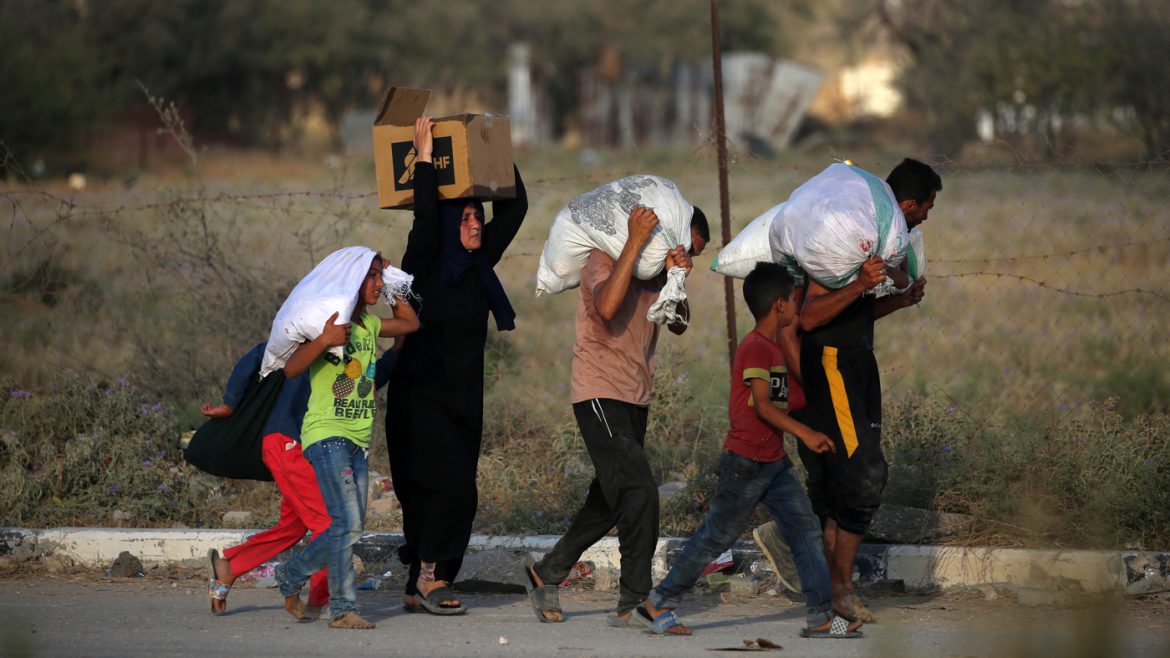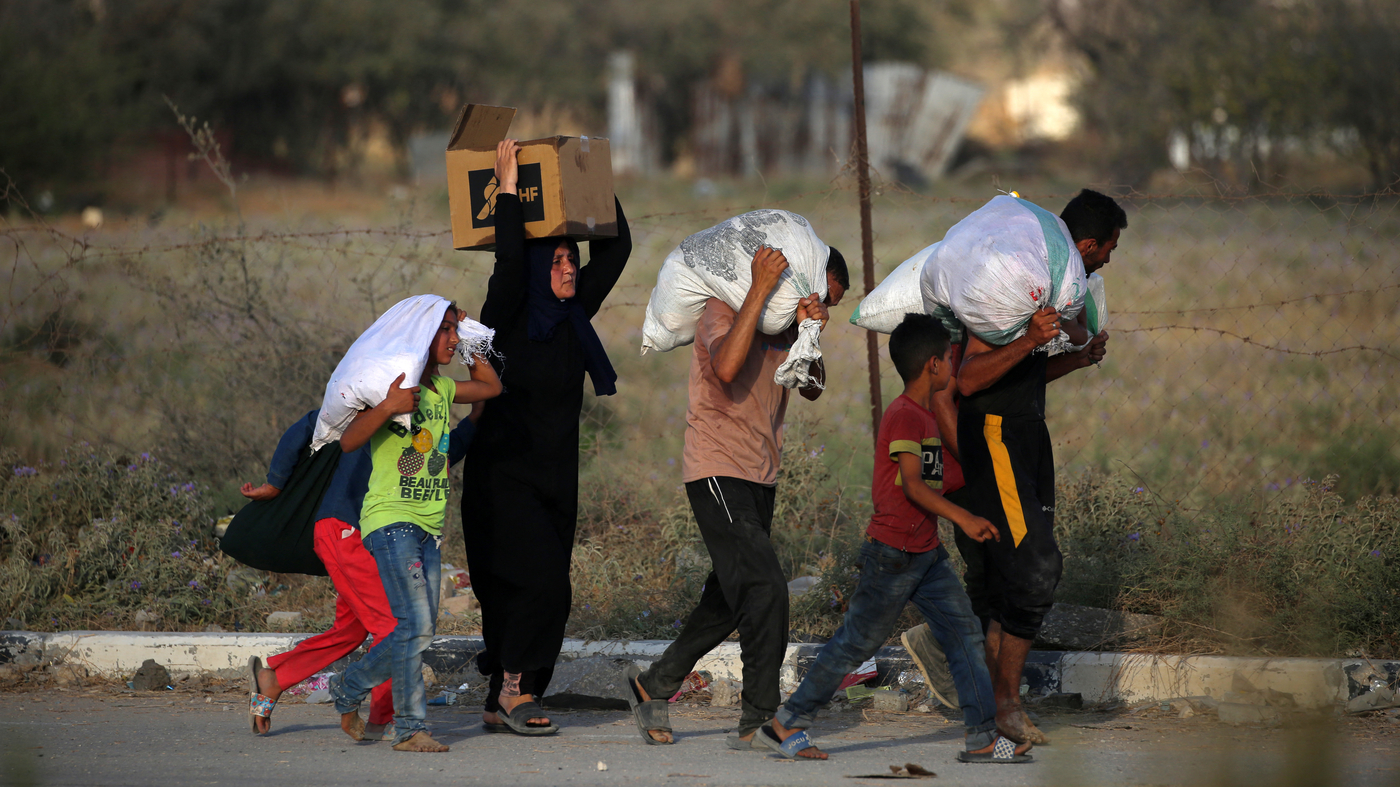The pursuit of sustenance is a fundamental human right, a primal instinct woven into the fabric of our being. Yet, for Palestinians in Gaza, this simple act of seeking food has become a harrowing odyssey, a daily dance with death where the stakes are nothing less than survival. The year is 2025, and the news trickles out, fragmented and desperate: stories of gunfire, ambushes, and a pervasive hunger that gnaws at the soul of a besieged population. This is not a distant historical account; it is the grim reality unfolding now, a testament to human resilience in the face of unimaginable adversity.
A Territory Under Siege: The Roots of the Crisis
Gaza, a narrow strip of land bordering Israel, Egypt, and the Mediterranean Sea, has been under blockade for years. This protracted siege, coupled with recurring conflicts, has devastated the local economy and infrastructure, leaving the majority of its residents dependent on humanitarian aid. The restrictions on movement and access to resources have choked the territory, transforming it into what some describe as an open-air prison.
The situation has deteriorated drastically, particularly following renewed escalations in conflict. International journalists face severe restrictions, limiting independent reporting from within Gaza. This information vacuum makes it difficult to grasp the full extent of the crisis, yet the available evidence paints a horrifying picture. Food supplies are scarce, and what little aid trickles in is often insufficient to meet the overwhelming needs of the population.
The blockade has not only restricted the flow of goods but has also stifled economic activity. The unemployment rate in Gaza has soared, leaving many families without a steady income. The fishing industry, once a vital source of livelihood, has been severely curtailed by Israeli restrictions on fishing zones. Farmers face similar challenges, with limited access to fertilizers, seeds, and water. The agricultural sector, which once provided a significant portion of Gaza’s food supply, has been crippled, further exacerbating the food crisis.
The Gauntlet of Hunger: A Deadly Quest for Survival
For many Palestinians in Gaza, acquiring food is not as simple as visiting a local market. It involves navigating a treacherous landscape fraught with danger. Reports detail how individuals risk their lives daily, venturing into what have become militarized zones in the desperate hope of finding sustenance.
Israeli troops, they say, open fire on crowds attempting to cross these zones to reach aid distribution points. The desperation is palpable, pushing people to take risks that would be unthinkable under normal circumstances. Imagine the scene: mothers clutching children, elderly men and women hobbling forward, all driven by the primal need to feed themselves and their families, knowing that each step could be their last.
But the threat does not end with military fire. Even if they manage to reach the aid, they face another peril: armed gangs who prey on the vulnerable. These knife-wielding thieves ambush those who succeed in obtaining food, adding another layer of horror to an already desperate situation. It’s a brutal, Darwinian struggle for survival, where the strong prey on the weak, and basic human decency is eroded by the relentless pressure of hunger.
The psychological toll of this daily struggle is immense. Many Gazans live in a constant state of fear, not knowing if they will be able to secure food for the day. The uncertainty and stress take a heavy toll on mental health, leading to increased rates of anxiety, depression, and post-traumatic stress disorder (PTSD). Children, in particular, are vulnerable, with many experiencing developmental delays and emotional trauma due to the chronic stress and malnutrition.
Aid Interrupted: A System Mired in Chaos
While Israel has reportedly begun allowing some food into Gaza, the distribution system is plagued with problems. Most of the supplies are channeled through specific organizations, including private contractors supported by the United States, with a smaller portion going to the UN and other humanitarian groups. However, these systems are described as being “mired in chaos.”
Reports from journalists on the ground reveal a disturbing picture of inefficiency, corruption, and outright violence at these distribution sites. People are packed together, desperate for assistance, creating a volatile environment where tensions run high. Allegations have emerged of aid being diverted, sold on the black market, or simply not reaching those who need it most.
The situation is further complicated by the restrictions imposed on humanitarian organizations. The prevention of certain essential items, including food parcels, fuel, and shelter, from entering Gaza severely hinders the ability of aid agencies to provide effective assistance. This deliberate obstruction exacerbates the crisis and perpetuates the cycle of hunger and desperation.
The international community has a responsibility to ensure that aid reaches those in need. However, the current system is fraught with inefficiencies and corruption. There is an urgent need for transparency and accountability in the distribution of aid. Independent monitoring and evaluation mechanisms should be put in place to ensure that aid is delivered to the most vulnerable populations. Additionally, the international community must pressure Israel to lift the blockade and allow for the unrestricted flow of goods and people into and out of Gaza.
A Journalist’s Perilous Pilgrimage: Witnessing the Unfolding Tragedy
Personal accounts from journalists who have managed to gain access to Gaza offer a chilling insight into the reality on the ground. One such account describes a harrowing experience seeking food from a distribution site. The journalist faced Israeli military fire, the unsettling presence of private U.S. contractors aiming laser beams at his forehead, and the looming threat of masked thieves.
This firsthand narrative underscores the extreme risks faced by anyone attempting to secure food in Gaza. It is a testament to the courage and determination of journalists who are willing to risk their lives to document the suffering of others. Their reports serve as a vital source of information, shedding light on a crisis that would otherwise remain hidden from the world’s gaze.
The role of journalists in conflict zones cannot be overstated. They provide a window into the realities of war and its impact on civilian populations. Their work is crucial in raising awareness and mobilizing international support for those in need. However, journalists in Gaza face immense risks, including physical harm, detention, and censorship. The international community must do more to protect journalists and ensure their safety so that they can continue to report on the ground truth.
The Humanitarian Catastrophe: Beyond the Statistics
The statistics are staggering: tens of thousands killed or injured, the vast majority of Gazans internally displaced, and widespread hunger and malnutrition. But behind these numbers lie individual stories of loss, suffering, and resilience.
Imagine a father who is unable to feed his children, a mother who watches her baby weaken from lack of nourishment, a child who has known nothing but conflict and deprivation. These are the human faces of the Gaza crisis, the real victims of a conflict that has robbed them of their dignity, their security, and their basic human rights.
The long-term consequences of this humanitarian catastrophe are profound. Malnutrition can stunt physical and cognitive development, leaving lasting scars on an entire generation. The psychological trauma of living in a constant state of fear and insecurity can have devastating effects on mental health. The erosion of social structures and institutions can lead to a breakdown of law and order, further exacerbating the crisis.
The international community must recognize the long-term implications of the Gaza crisis and take immediate action to address the humanitarian needs of the population. This includes providing immediate relief, such as food, water, and medical supplies, as well as long-term solutions, such as rebuilding infrastructure, supporting education, and promoting economic development. The goal should be to create a sustainable future for the people of Gaza, where they can live in dignity and security.
A Call to Action: Reclaiming Humanity in the Face of Despair
The situation in Gaza demands urgent attention and concerted action from the international community. It is not enough to simply offer words of sympathy or expressions of concern. Concrete steps must be taken to alleviate the suffering of the Palestinian people and to address the root causes of the crisis.
This includes ensuring unfettered access for humanitarian aid, lifting the blockade, and working towards a just and lasting resolution to the Israeli-Palestinian conflict. It also requires holding accountable those who perpetrate violence and violate international law. The world cannot stand idly by while an entire population is subjected to collective punishment and deprived of their fundamental human rights.
The international community must also address the underlying political issues that have led to the current crisis. This includes supporting a peaceful resolution to the Israeli-Palestinian conflict, promoting dialogue and negotiation, and ensuring that the rights of all parties are respected. The goal should be to create a just and lasting peace that ensures the security and well-being of both Israelis and Palestinians.
The Echo of Hunger
The harrowing journey for food in Gaza is not just a local tragedy; it is a stain on our collective conscience. It is a stark reminder of the human cost of conflict, injustice, and indifference. Until the day that Palestinians in Gaza can secure their daily bread without risking their lives, the world has a moral obligation to act. Let the echo of their hunger resonate in our hearts and minds, compelling us to reclaim our shared humanity and to work towards a future where dignity and justice prevail.


